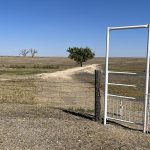Once you figure out your business, it’s time to set some goals for making money. The problem is that no one shows you how to do that, so you just guess. Then you have no idea how to reach that goal, and you have no way to tell if you are on track.

Here’s a better approach to figure out your revenue goals. Start with your available activity, and base your revenue goals on that. In other words, given the amount of time you have to work, how much revenue are you likely to generate?
For each revenue stream you plan to use, estimate how much time goes into each sale. Even if it’s not a direct “sale,” you have to put some effort into generating it.
Here are some examples:
- If you write and sell articles, estimate the time to pitch and sell the article, plus the time to write it. If you average one hour selling and then three hours writing each article, and you have 20 hours available per week, estimate no more than five articles per week. Multiply five by the average price you get for an article, and that’s your max weekly revenue goal.
- If you sell by phone, a common ratio I’ve heard is six contacts for one sale. So if you only have five days available this month, and can make 12 calls each day, that’s 60 calls. Divide the number of calls by six, and you can estimate that you’ll make ten sales. Multiply ten by your average revenue per sale.
- If you run a cleaning service, start with the length of time each job takes. Two hours per job, working 30 hours per week, is 15 jobs. Fifteen times the price per job is your weekly goal.
- If you are starting a store, try to estimate the average sales per day, then multiply that by the number of days you’ll be open per month. Be sure this goal makes sense when divided into sales per hour, and average amount per sale. Experience helps a lot in estimating retail sales!
Since most of us use multiple revenue streams, you’ll need to try to balance them. How? Based on your experience so far, what you think is reasonable for each one, and how much time you want to invest in each.
Whatever you produce or sell, you can estimate how much time it takes, and how much will fit into your available time. That’s where revenue goals come from.
[Photo of an entrepreneur selling in Peru, from my Flickr. She can estimate her revenue goals based on the number of buses that stop each day at her location.]
This article is part of the Small Biz 100, a series of 100 practical hands-on posts for small business people and solo entrepreneurs, whether in a small town, the big city, or in between. If you have questions you’d like us to address in this series, leave a comment or send us an email at becky@smallbizsurvival.com. This is a community project!
Get the whole series by subscribing to Small Biz Survival.
- About the Author
- Latest by this Author
Becky started Small Biz Survival in 2006 to share rural business and community building stories and ideas with other small town business people. She and her husband have a small cattle ranch and are lifelong entrepreneurs. Becky is an international speaker on small business and rural topics.











[…] Next time, we’ll talk about converting those financial goals into real world activities. […]